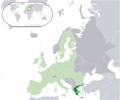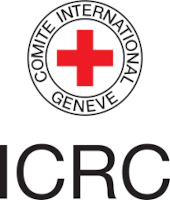Knowledge fuels change
For over a decade, Energypedia has shared free, reliable energy expertise with the world.
We’re now facing a serious funding gap.
Help keep this platform alive — your donation, big or small, truly matters!
Thank you for your support
Difference between revisions of "Greece Energy Situation"
***** (***** | *****) m |
***** (***** | *****) m |
||
| Line 5: | Line 5: | ||
|CES Country Coordinates=39.0000° N, 22.0000° E | |CES Country Coordinates=39.0000° N, 22.0000° E | ||
}} | }} | ||
| + | |||
| + | |||
| + | |||
= Introduction = | = Introduction = | ||
| Line 15: | Line 18: | ||
== Energy Supply<br/> == | == Energy Supply<br/> == | ||
| + | <span class="mw-customtoggle-EnergySupply" style="font-size:small; font-weight: bold; display:inline-block; float:right; color: blue;"><span class="mw-customtoggletext">[Show/hide]</span></span> | ||
| + | <div id="mw-customcollapsible-EnergySuplly" class="mw-collapsible mw-collapsed"> | ||
| − | === Primary | + | === Primary Energy === |
Around 61% of Greece’s energy needs are covered through imports with the remaining 39% being covered through national energy sources, mainly lignite (77%) and RES (22%). Imported energy sources are mainly petroleum products that account for 44% of total energy consumption and natural gas with a share of around 13%. | Around 61% of Greece’s energy needs are covered through imports with the remaining 39% being covered through national energy sources, mainly lignite (77%) and RES (22%). Imported energy sources are mainly petroleum products that account for 44% of total energy consumption and natural gas with a share of around 13%. | ||
| Line 48: | Line 53: | ||
Electricity tariffs in the first half of 2013 for final consumers were on average 156 €/MWh for households and 125 €/MWh for industrial companies, after an increase of 25% and 16% respectively from 2011. | Electricity tariffs in the first half of 2013 for final consumers were on average 156 €/MWh for households and 125 €/MWh for industrial companies, after an increase of 25% and 16% respectively from 2011. | ||
| − | [[Greece Energy Situation#toc|►Go to Top]] | + | [[Greece Energy Situation#toc|►Go to Top]]</div> |
== Market Situation for Renewable Energies<br/> == | == Market Situation for Renewable Energies<br/> == | ||
| − | + | <span class="mw-customtoggle-MarketSituationforRenewableEnergies" style="font-size:small; font-weight: bold; display:inline-block; float:right; color: blue;"><span class="mw-customtoggletext">[Show/hide]</span></span> | |
| + | <div id="mw-customcollapsible-MarketSituationforRenewableEnergies" class="mw-collapsible mw-collapsed"> | ||
=== [[Portal:Solar|Solar Energy]]<br/> === | === [[Portal:Solar|Solar Energy]]<br/> === | ||
| Line 106: | Line 112: | ||
Currently, only biodiesel is being commercialized in Greece. Around two thirds of the production is imported, the rest is produced locally, mainly from sun flowers and rapeseed. So far, bioethanol as well as second and third generation biofuels have not been introduced in the Greek market. | Currently, only biodiesel is being commercialized in Greece. Around two thirds of the production is imported, the rest is produced locally, mainly from sun flowers and rapeseed. So far, bioethanol as well as second and third generation biofuels have not been introduced in the Greek market. | ||
| − | [[Greece Energy Situation#toc|►Go to Top]] | + | [[Greece Energy Situation#toc|►Go to Top]]</div> |
== Policy Framework, Laws and Regulations<br/> == | == Policy Framework, Laws and Regulations<br/> == | ||
| + | <span class="mw-customtoggle-PolicyFramework2CLawsandRegulations" style="font-size:small; font-weight: bold; display:inline-block; float:right; color: blue;"><span class="mw-customtoggletext">[Show/hide]</span></span> | ||
| + | <div id="mw-customcollapsible-PolicyFramework2CLawsandRegulations" class="mw-collapsible mw-collapsed"> | ||
=== General Energy Policy, Energy Strategy <ref>Ministry of Environment, Energy and Climate Change: http://www.ypeka.gr/Default.aspx?tabid=225&language=en-US</ref><br/> === | === General Energy Policy, Energy Strategy <ref>Ministry of Environment, Energy and Climate Change: http://www.ypeka.gr/Default.aspx?tabid=225&language=en-US</ref><br/> === | ||
| Line 161: | Line 169: | ||
According to the EU Directive 2009/28/EC, Greece has to achieve a target of 18% renewable energy sources (RES) in gross final energy consumption by 2020. This target has been increased to 20% (Law 3851/2010), while the specific trajectory for achieving it is presented in the National Renewable Energy Action Plan (NREAP) of 2010. The overall target is broken down further into sub-targets of 40% RES in gross electricity consumption, 20% RES in final energy consumption for heating and cooling, and 10% RES in final energy consumption for transport until 2020.<br/> | According to the EU Directive 2009/28/EC, Greece has to achieve a target of 18% renewable energy sources (RES) in gross final energy consumption by 2020. This target has been increased to 20% (Law 3851/2010), while the specific trajectory for achieving it is presented in the National Renewable Energy Action Plan (NREAP) of 2010. The overall target is broken down further into sub-targets of 40% RES in gross electricity consumption, 20% RES in final energy consumption for heating and cooling, and 10% RES in final energy consumption for transport until 2020.<br/> | ||
| − | [[Greece Energy Situation#toc|►Go to Top]] | + | [[Greece Energy Situation#toc|►Go to Top]]</div> |
== Institutional Set-up in the Energy Sector<br/> == | == Institutional Set-up in the Energy Sector<br/> == | ||
| − | + | <span class="mw-customtoggle-InstitutionalSet-upintheEnergySector" style="font-size:small; font-weight: bold; display:inline-block; float:right; color: blue;"><span class="mw-customtoggletext">[Show/hide]</span></span> | |
| + | <div id="mw-customcollapsible-InstitutionalSet-upintheEnergySector" class="mw-collapsible mw-collapsed"> | ||
=== Ministry of Environment, Energy and Climate Change (MEECC/YPEKA) === | === Ministry of Environment, Energy and Climate Change (MEECC/YPEKA) === | ||
| Line 261: | Line 270: | ||
The Trans Adriatic Pipeline (TAP) will be used for transporting natural gas from the Caspian basin in Azerbaijan to Western Europe. Connecting to the Trans-Anatolian Pipeline (TANAP), TAP will transport the gas through Greece and Albania, crossing the Adriatic and terminating in Italy. The pipeline is supposed to supply a total of 10 billion cubic meters (bcm) of natural gas to markets Europe. It has a total length of 867 km with 547 km in Greece. Construction is supposed to begin in 2015 and will be completed until 2019. | The Trans Adriatic Pipeline (TAP) will be used for transporting natural gas from the Caspian basin in Azerbaijan to Western Europe. Connecting to the Trans-Anatolian Pipeline (TANAP), TAP will transport the gas through Greece and Albania, crossing the Adriatic and terminating in Italy. The pipeline is supposed to supply a total of 10 billion cubic meters (bcm) of natural gas to markets Europe. It has a total length of 867 km with 547 km in Greece. Construction is supposed to begin in 2015 and will be completed until 2019. | ||
| − | [[Greece Energy Situation#toc|►Go to Top]] | + | [[Greece Energy Situation#toc|►Go to Top]]</div> |
= Further Information = | = Further Information = | ||
| + | <span class="mw-customtoggle-FurtherInformation" style="font-size:small; font-weight: bold; display:inline-block; float:right; color: blue;"><span class="mw-customtoggletext">[Show/hide]</span></span> | ||
| + | <div id="mw-customcollapsible-FurtherInformation" class="mw-collapsible mw-collapsed"> | ||
International Energy Agency: Energy Policies of IEA Countries. Greece 2011 Review: [http://www.iea.org/publications/freepublications/publication/Greece2011_unsecured.pdf http://www.iea.org/publications/freepublications/publication/Greece2011_unsecured.pdf] | International Energy Agency: Energy Policies of IEA Countries. Greece 2011 Review: [http://www.iea.org/publications/freepublications/publication/Greece2011_unsecured.pdf http://www.iea.org/publications/freepublications/publication/Greece2011_unsecured.pdf] | ||
| Line 269: | Line 280: | ||
Invest in Greece: [http://www.investingreece.gov.gr/default.asp?pid=36§orID=38&la=1 http://www.investingreece.gov.gr/default.asp?pid=36§orID=38&la=1] | Invest in Greece: [http://www.investingreece.gov.gr/default.asp?pid=36§orID=38&la=1 http://www.investingreece.gov.gr/default.asp?pid=36§orID=38&la=1] | ||
| − | <br/> | + | <br/></div> |
= References = | = References = | ||
| + | <span class="mw-customtoggle-References" style="font-size:small; font-weight: bold; display:inline-block; float:right; color: blue;"><span class="mw-customtoggletext">[Show/hide]</span></span> | ||
| + | <div id="mw-customcollapsible-References" class="mw-collapsible mw-collapsed"> | ||
| − | <references />< | + | <references /></div> |
| + | [[Category:Country_Energy_Situation]] | ||
| + | [[Category:Europe_and_Central_Asia]] | ||
[[Category:Greece]] | [[Category:Greece]] | ||
| − | |||
| − | |||
Revision as of 12:33, 25 September 2014
Capital:
Athens
Region:
Coordinates:
39.0000° N, 22.0000° E
Total Area (km²): It includes a country's total area, including areas under inland bodies of water and some coastal waterways.
Error while fetching data from URL http://api.worldbank.org/v2/countries/GRC/indicators/AG.SRF.TOTL.K2?per_page=100&date=2000:2025&MRV=5: $2.
There was a problem during the HTTP request: 500 Internal Server Error
Could not get URL http://api.worldbank.org/v2/countries/GRC/indicators/AG.SRF.TOTL.K2?per_page=100&date=2000:2025&MRV=5 after 3 tries.
Population: It is based on the de facto definition of population, which counts all residents regardless of legal status or citizenship--except for refugees not permanently settled in the country of asylum, who are generally considered part of the population of their country of origin.
Could not get URL http://api.worldbank.org/v2/countries/GRC/indicators/SP.POP.TOTL?per_page=100&date=2000:2025&MRV=5 after 3 tries. ()
Rural Population (% of total population): It refers to people living in rural areas as defined by national statistical offices. It is calculated as the difference between total population and urban population.
Could not get URL http://api.worldbank.org/v2/countries/GRC/indicators/SP.RUR.TOTL.ZS?per_page=50&date=2000:2025&MRV=5 after 3 tries. ()
GDP (current US$): It is the sum of gross value added by all resident producers in the economy plus any product taxes and minus any subsidies not included in the value of the products. It is calculated without making deductions for depreciation of fabricated assets or for depletion and degradation of natural resources.
Could not get URL http://api.worldbank.org/v2/countries/GRC/indicators/NY.GDP.MKTP.CD?per_page=100&date=2000:2025&MRV=5 after 3 tries.2 ()
GDP Per Capita (current US$): It is gross domestic product divided by midyear population
Could not get URL http://api.worldbank.org/v2/countries/GRC/indicators/NY.GDP.PCAP.CD?per_page=100&date=2000:2025&MRV=5 after 3 tries. ()
Access to Electricity (% of population): It is the percentage of population with access to electricity.
Could not get URL http://api.worldbank.org/v2/countries/GRC/indicators/EG.ELC.ACCS.ZS?per_page=100&date=2000:2025&MRV=5 after 3 tries.no data
Energy Imports Net (% of energy use): It is estimated as energy use less production, both measured in oil equivalents. A negative value indicates that the country is a net exporter. Energy use refers to use of primary energy before transformation to other end-use fuels, which is equal to indigenous production plus imports and stock changes, minus exports and fuels supplied to ships and aircraft engaged in international transport.
Could not get URL http://api.worldbank.org/v2/countries/GRC/indicators/EG.IMP.CONS.ZS?per_page=100&date=2000:2025&MRV=5 after 3 tries.no data
Fossil Fuel Energy Consumption (% of total): It comprises coal, oil, petroleum, and natural gas products.
Could not get URL http://api.worldbank.org/v2/countries/GRC/indicators/EG.USE.COMM.FO.ZS?per_page=100&date=2000:2025&MRV=5 after 3 tries.no data
Introduction
The Greek energy sector is still largely dependent on fossil fuels, most of which are imported. Domestic energy sources include lignite which accounts for around 50% of electricity generation as well as renewable energy sources (RES) such as hydro-power, wind, solar energy and biomass. RES currently account for 13.8 % of gross final energy consumption and a national target of a 20% share by 2020 has been set.
A number of important reforms aiming at a further liberalization of the energy market, its integration with neighboring countries and the privatization of public companies are currently being implemented. There are also plans for large infrastructure projects in the electricity, gas and petroleum sector that are supposed to strengthen Greece’s position as an energy hub in the South-East of Europe.
Energy Supply
[Show/hide]
Primary Energy
Around 61% of Greece’s energy needs are covered through imports with the remaining 39% being covered through national energy sources, mainly lignite (77%) and RES (22%). Imported energy sources are mainly petroleum products that account for 44% of total energy consumption and natural gas with a share of around 13%.
Electricity
At the end of 2013, a capacity of 17,373 MW was installed in the Greek interconnected electricity system, consisting of 4,456 MW lignite, 698 oil, 4,906 MW natural gas, 3,018 MW large hydro-power, and 4,295 MW RES. On the non-interconnected islands, the installed capacity consisted of 1,783 MW of diesel generators and 448 MW of RES. This gives a total national installed capacity of 19,604 MW, of which 61% are thermal power plants, 15% large hydro-power plants and 24% other RES.
In 2012, gross national electricity generation was 61 TWh, 83% of which from thermal power plants. This corresponds to a decrease of around 4% compared to the situation before the beginning of the economic crisis.
The share of RES in gross electricity consumption reached 17% in 2012, compared to an NREAP intermediate target of 18.8%. Hydro-power contributed 7.5%, wind energy 6.3%, solar photovoltaic 2.7% and biomass 0.6%. For 2013, the share of RES is estimated to reach 23% of gross electricity consumption, compared to an NREAP intermediate target of 21.8%.
Greece has electricity interconnections with Albania, Bulgaria, Italy (400 kV HVDC cable), FYROM and Turkey. In 2013, Greece imported 5.6 TWh and exported 3.9 TWh.
Energy Consumption
Primary energy
Total energy consumption in Greece was around 27 million tons of oil equivalent (TOE) in 2012. Final energy consumption was 16 million TOE in 2012, a decrease of around 24% since the beginning of the economic crisis.
Electricity
Gross national electricity consumption in 2012 was 55 TWh, including transmission and distribution losses of 2.9%. The annual peak load in the interconnected system currently stands at around 9,000 MW.
Electricity tariffs in the first half of 2013 for final consumers were on average 156 €/MWh for households and 125 €/MWh for industrial companies, after an increase of 25% and 16% respectively from 2011.
►Go to TopMarket Situation for Renewable Energies
[Show/hide]
Solar Energy
Solar energy is playing an increasingly important part in the energy mix of Greece. The country has high levels of solar irradiation with an average global horizontal irradiation level of more than 1,500 kWh/m2.
Photovoltaic energy has seen a significant increase in capacity over the past 2 years from 620 MW by the end of 2011 to 2,520 MW in September 2013 due to very high feed-in tariff levels. The current national capacity target for photovoltaic energy of 2,200 MW by 2020 has therefore already been achieved in 2013.
Today, 14,369 mainly small and medium sized PV plants are installed, corresponding to a capacity of 2,154 MW. In addition, 40,537 small PV systems are installed on rooftops corresponding to an additional capacity of approximately 366 ΜW. Only 6.2% of the total PV capacity is installed on non-interconnected islands.
There are currently no concentrated solar power (CSP) plants installed in Greece. There are some sites with direct irradiation levels over 2,000 kWh/m2/year on the Southern Greek islands that could be interesting for CSP. Several projects with a combined capacity of 424 MW are currently under development. The national target for CSP is 250 MW until 2020.
With around 4.1 million m2 (2.9 GWth) of solar thermal systems installed, Greece has the second largest total capacity in Europe after Germany. It also has the third largest per capita ratio of installed collector surface after Cyprus and Austria. Around 243 000 m² (170.1 MWth) of solar thermal systems have been installed in 2012. The Greek market mostly consists of individual solar water heaters of the thermosiphon type. There is still a significant potential for larger solar thermal systems in the tertiary sector and in industry.
Wind Energy
Greece has some of the most attractive sites for the use of wind energy in Europe, with average capacity factors of around 25% for the mainland and 30% for the islands. The economic wind energy potential in Greece is estimated at 10,000-12,000 MW.
The national capacity target for wind energy is 7,500 MW until 2020, including 300 MW of offshore wind energy. At the end of 2013, a total capacity of 1,809 MW of wind parks has been installed, compared to 1,749 MW in 2012 and 1,634 MW in 2011. 288 MW of wind turbines have been installed on non-interconnected islands, out of which around 70% have been installed on Crete.
Off-shore wind turbines have not yet been installed, with the main reasons to be found both at difficulties in the environmental permitting procedure and technical problems mainly due to the depths of the Aegean sea floor. There are plans to introduce a new programme for small wind energy turbines with capacities below 50 kW starting from mid-2014.
Small hydro-power
There is currently an installed capacity of 218 MW of small hydro-power (SHP) plants in Greece. By definition, these are hydro-power stations with a capacity less than 15 MW. Due to the high fluctuation of rainfall, the majority of these plants produce mainly during the wet season (winter and spring). They are all run-off river type, without any kind of reservoir. Around 104 SHP projects are currently in operation, mostly located in Epirus, Macedonia and Peloponnese. The economic SHP potential in Greece is estimated at 1,000- 2,000 MW.
Biomass
There are only few biomass energy projects for electricity generation that have been developed in Greece, mainly for the utilization of municipal wastes in biogas plants. There is still a large potential for the utilisation of biomass for energy purposes, especially biomass waste and residues from the agricultural, industrial and residential sectors. The total installed capacity of biomass energy currently stands at 46 MW for a total of 12 individual projects. This compares with an intermediated national target of 80 MW for 2013 and 250 MW by 2020 according to the National Renewable Energy Action Plan (NREAP).
Geothermal
Greece lies in a geographic position that is favorable to geothermal resources, both high temperature and low temperature. High temperature resources, suitable for power generation coupled with heating and cooling, are found at depths of 1-2 kilometres on the Aegean islands of Milos, Santorini, and Nisyros. Other locations that are promising at depths of 2-3 kilomteres are on the islands of Lesvos, Chios, and Samothraki as well as the basins of Central-Eastern Macedonia and Thrace.
Low temperature geothermal resources are found at the plains of Macedonia-Thrace and in the vicinity of each of the 56 hot springs found in Greece. These areas include Loutra-Samothrakis, Lesvos, Chios, Alexandroupolis, Serres, Thermopyles, Chalkidiki, and many others.
Low temperature geothermal applications include space heating and in agricultural uses (greenhouse heating, the drying of fruits and vegetables, aquaculture and seawater desalination, and in spas), providing an ideal synergy with other widespread commercial ventures in Greece.
Geothermal projects for electricity generation have not yet been developed in Greece. The national target for geothermal electricity is 120 MW until 2020.
Biofuel
Greece has a national target of 10% renewable energy in the transport sector. The largest share of this is supposed to come from biofuels. The RES share in the transport sector was around 1.06% in 2012. National regulation obliges Greek refineries to blend at least 5% of biofuels in their production. Biodiesel quantities are allocated every year after a relevant call for tenders and following a specific procedure to stakeholders, producers or importers, who are interested in participating in this quota system.
Currently, only biodiesel is being commercialized in Greece. Around two thirds of the production is imported, the rest is produced locally, mainly from sun flowers and rapeseed. So far, bioethanol as well as second and third generation biofuels have not been introduced in the Greek market.
►Go to TopPolicy Framework, Laws and Regulations
[Show/hide]
General Energy Policy, Energy Strategy [1]
The priority and top objective of Greek energy policy is to safeguard and manage energy resources in a manner which secures the smooth, uninterrupted and reliable supply of the nation’s energy needs and access for all users to affordable, secure energy. The second objective is to secure energy stocks, through alliances and alternatives energy sources and routes in order to ensure the supply of the domestic market and protect consumers in the case of emergencies. The third objective is the viable and sustainable development of the energy sector from the stage of production to the end-use while protecting nature and safeguarding the environment.
The strategy to ensure supply needs and address energy issues in Greece is shaped by the regulatory and legal framework which focuses today on the following general axis:
- Access to a wide variety of energy sources
- Construction of oil and natural gas pipelines within international networks
- Increased use of domestic energy sources and stocks
- Reduced dependence on certain high risk energy sources
- Development of RES installations with the granting of incentives
- Use and diffusion of clean and efficient environment friendly technologies
- Liberalization of the market, increased competitiveness and putting an end to monopolies in the electricity and natural gas sectors.
- Establishment of a healthy investment climate for businesses in the energy sector
- Energy savings for industry, transport, buildings and homes
- Establishment of national targets for the increased penetration of energy generated from RES, the reduction of greenhouse gas emissions and energy saving.
Important Laws and Regulations
Renewable Energy Laws[2]
The support mechanism for electricity generation from renewable energy sources is based mainly on Law 3468/2006 and Law 3851/2010. According to these laws, priority is given for the injection of electricity from RES into the electricity grid. The electricity produced is remunerated by a technology-specific feed-in tariff (FIT). These FIT are further differentiated according to the size of the RES installation with smaller systems benefitting from higher FIT. Payment of the FIT is guaranteed for a period of 20 years (25 years for small PV systems and solar thermal power plants) in the context of a sales contract (Power Purchase Agreement – PPA). Regular degression rates are currently only applied to FIT for photovoltaic energy systems. FIT levels are adjusted annually by a certain percentage of the consumer price index to take into consideration the inflation of operating costs. FIT for small hydro-power, geothermal stations and biomass energy systems are increased by 15-20% if the investor of the RES plant decides not to apply for an investment subsidy under the national investment law which accounts for 20-40% of investment costs. Wind energy and photovoltaic energy systems are not entitled to investment grants but they can benefit from tax incentives.
Licensing procedures for renewable energy projects
The licensing procedure for RES projects has been significantly simplified in 2010. Larger RES projects require a production license (issued by RAE), an installation license (issued by YPEKA or by local authorities) and an operation license (issued by YPEKA or by local authorities). Small and medium sized RES projects (PV and biomass plants ≤ 1 MW, geothermal stations ≤ 500 kW, wind parks ≤ 100 kW) do not require the above licenses. In addition, other licenses (water use, building permit, use of forest land…) as well as an Approval of Environment Terms (AET) or Standard Environmental Commitments (SEC) are required according to the nature of the project. All RES projects have to submit applications for non-binding and binding connection offers to the competent network operator (IPTO or HEDNO). They are also required to sign a connection contract with the competent network operator (IPTO or HEDNO) as well as a PPA with LAGIE (or HEDNO for the non-interconnected islands).
The RES electricity compensation mechanism
FIT are paid to RES producers through the RES Special Account which is managed by the Electricity Market Operator (LAGIE). The revenues of this account include the following:
- Revenues of LAGIE from the sale of RES electricity on the wholesale market at the system marginal price (SMP)
- Revenues from the auctioning of greenhouse gas emission allowances
- 25% of the fee for the Public Broadcast Company
- Special fee of 2€/MWh for electricity produced by lignite
- Special Fee for the Reduction of Greenhouse Gases Emissions (ETMEAR)
The ETMEAR which is collected through electricity bills varies between different categories of final consumers. The ETMEAR has been increased several times since 2011 when it stood at 1.84 €/MWh. The last revision was in July 2013, with an increase of the weighted average ETMEAR from 9.30 €/MWh to 14.96 €/MWh. For households, the ETMEAR currently stands at 20.5 €/MWh.
Specific Strategies
National Action Plan 20-20-20 [3]
According to the EU Directive 2009/28/EC, Greece has to achieve a target of 18% renewable energy sources (RES) in gross final energy consumption by 2020. This target has been increased to 20% (Law 3851/2010), while the specific trajectory for achieving it is presented in the National Renewable Energy Action Plan (NREAP) of 2010. The overall target is broken down further into sub-targets of 40% RES in gross electricity consumption, 20% RES in final energy consumption for heating and cooling, and 10% RES in final energy consumption for transport until 2020.
Institutional Set-up in the Energy Sector
[Show/hide]
Ministry of Environment, Energy and Climate Change (MEECC/YPEKA)
The Ministry of Environment, Energy and Climate Change (MEECC/YPEKA) has the responsibility for the definition and implementation of the national energy policy as well as the coordination of the energy sector, including the promotion of renewable energy sources. YPEKA supervises a number of public institutions and companies with activities in the renewable energy sector, including RAE, PPC, IPTO, HEDNO and CRES. The responsible organisational unit within YPEKA is the General Secretariat for Energy and Climate Change.
Website: http://www.ypeka.gr
Regulatory Authority for Energy (RAE)
The Regulatory Authority for Energy (RAE) is an independent administrative authority, with financial and administrative independence under the supervision of YPEKA. RAE monitors the operation of the energy markets, including electricity from RES. It issues opinions on electricity retail tariffs as well as access tariffs to electricity transmission and distribution networks. It is responsible for granting production licenses for electricity generation from RES. RAE also acts as a dispute settlement authority with respect to complaints against transmission or distribution system operators in the electricity sector.
Website: http://www.rae.gr
Operator of the Electricity Market (LAGIE)
LAGIE has the responsibility for the operation of the electricity market according to the mandatory pool model. Fossil fuel and large hydro electricity producers submit their offers to LAGIE that organises the day-ahead market based on these offers. For the case of RES, LAGIE concludes power purchase agreements (PPA) with RES producers based on the current feed-in tariffs (FIT). These FIT are paid from the RES Special Account which is also managed by LAGIE. For the non-interconnected islands, the funds are transferred by LAGIE to HEDNO. Apart from the short term wholesale electricity market, LAGIE also has the responsibility for managing the long term capacity market as well as the imbalance settlement mechanism.
Website: http://www.lagie.gr
Public Power Corporation (PPC/DEI)
The Public Power Corporation (PPC/DEI) Group consists until today of four companies with separate legal and managerial identities: PPC S.A., ADMIE, DEDDIE and PPC Renewables. The PPC Group currently holds assets in lignite mines, power generation, transmission and distribution. PPC S.A. is the biggest power producer and electricity supply company in Greece with approximately 7.4 million customers and a market share of around 98%. PPC’s current power portfolio consists of conventional thermal and hydroelectric power plants accounting for approximately 70% of the total installed capacity in the country. In 2012, the total installed capacity of PPC generation plants was 12.5 GW. PPC is active in the RES sector through its subsidiary company “PPC Renewables S.A.” (PPCR).
Website: http://www.dei.gr
Independent Power Transmission Operator (IPTO/ADMIE)
The Independent Power Transmission Operator (IPTO/ADMIE) S.A. is a wholly owned subsidiary of PPC S.A. that is however independent from its parent company in terms of its management and operation. There are plans for the full ownership unbundling of IPTO in 2014. IPTO has the role of Transmission System Operator (TSO) for the Hellenic Electricity Transmission System and is responsible for system operation, maintenance and development. IPTO is also managing electricity flows on the system, taking into account exchanges with other interconnected systems. It prepares on an annual basis the Hellenic Electricity Transmission System Ten Year Development Plan. It is also responsible for preparing day-ahead forecasts of the load and the RES electricity production as well as the optimisation of the day-ahead schedule.
Website: http://www.admie.gr
Hellenic Electricity Distribution Network Operator (HEDNO/DEDDIE)
The Hellenic Electricity Distribution Network Operator S.A. (HEDNO/DEDDIE) is a wholly owned subsidiary of PPC S.A., that is however independent from its parent company in terms of its management and operation. Its responsibilities are the operation, maintenance and development of the electricity distribution network in Greece. This includes the non-interconnected electricity networks as well as the electricity generation facilities on the Greek islands. On the islands, HEDNO is responsible for concluding power purchase agreements (PPA) with RES producers. HEDNO also manages the access of electricity consumers as well as RES electricity producers to the distribution network.
Website: http://www.deddie.gr
Centre for Renewable Energy Sources and Saving (CRES)
The Centre for Renewable Energy Sources and Saving (CRES) is a national entity for the promotion of renewable energy sources, rational use of energy and energy conservation. It was founded in September 1987 as a public entity which is supervised by YPEKA and has financial and administrative independence. CRES provides advisory services to YPEKA for the definition and implementation of the national renewable energy policy, strategy and planning. It conducts applied research on new energy technologies and provides technical support for the penetration and implementation of these technologies. CRES also implements European, national and international projects for the promotion and market penetration of new energy technologies.
Website: http://www.cres.gr
Renewable energy private sector associations and companies
There are a number of Greek associations representing the private companies that are active in the renewable energy sector. These include the Greek Association of RES Electricity Producers (GAREP), the Hellenic Wind Energy Association (HWEA/ELETAEN), the Hellenic Association of Photovoltaic Companies (HELAPCO), the Hellenic Association of Photovoltaic Energy Producers (SPEF), Greek Solar Industry Association (EBHE), the Hellenic Small Hydro Power Association (HSHA) and the Hellenic Association for the Development of Biomass (HELLABIOM).
Several hundred Greek and international companies are active in the RES sector in Greece. In the photovoltaic sector, a large number of predominantly small and medium companies and individuals (including farmers) operating several projects of different capacity are present. The wind energy sector in Greece is dominated by specialised companies that develop, own and operate a portfolio of wind parks, and in many cases also photovoltaic power stations and small hydro plants. Six companies own and operate wind parks that correspond to almost 70% of the installed capacity.
Greek Association of RES Electricity Producers: http://www.hellascres.gr
Hellenic Wind Energy Association: http://www.eletaen.gr
Hellenic Association of Photovoltaic Companies: http://www.helapco.gr
Hellenic Association of Photovoltaic Energy Producers:http://www.spef.gr
Greek Solar Industry Association: http://www.ebhe.gr
Hellenic Small Hydro Power Association: http://www.microhydropower.gr
Hellenic Association for the Development of Biomass: http://www.hellabiom.gr
Planned and Ongoing Energy Projects
The below-mentioned international energy projects with Greek involvement have been selected as Projects of Common Interest (PCI) by the European Commission.
Euro Asia Interconnector
The so-called Euro Asia Interconnector refers to plans to construct a 600 kV HVDC interconnection between Israel and Greece, passing through Cyprus and Crete. This project will also interconnect Crete to the Greek mainland electricity system and facilitate the further development of RES on the island. The project will have a capacity of 2000 MW and a total length of around 1,518 km (329 km between Cyprus and Israel, 879 km between Cyprus and Crete and 310 km between Crete and Athens).
Interconnector Greece-Bulgaria (IGB)
The natural gas Interconnector Greece-Bulgaria (IGB) will provide a direct link between the national natural gas systems of Greece and Bulgaria. The IGB pipeline will have an overall length of 182 km and an annual capacity of 3 billion cubic meters (bcm). The pipeline is expected to be put in operation in December 2014.
Trans Adriatic Pipeline (TAP)
The Trans Adriatic Pipeline (TAP) will be used for transporting natural gas from the Caspian basin in Azerbaijan to Western Europe. Connecting to the Trans-Anatolian Pipeline (TANAP), TAP will transport the gas through Greece and Albania, crossing the Adriatic and terminating in Italy. The pipeline is supposed to supply a total of 10 billion cubic meters (bcm) of natural gas to markets Europe. It has a total length of 867 km with 547 km in Greece. Construction is supposed to begin in 2015 and will be completed until 2019.
►Go to TopFurther Information
[Show/hide]
International Energy Agency: Energy Policies of IEA Countries. Greece 2011 Review: http://www.iea.org/publications/freepublications/publication/Greece2011_unsecured.pdf
Invest in Greece: http://www.investingreece.gov.gr/default.asp?pid=36§orID=38&la=1
References
[Show/hide]
- ↑ Ministry of Environment, Energy and Climate Change: http://www.ypeka.gr/Default.aspx?tabid=225&language=en-US
- ↑ Ministry of Environment, Energy and Climate Change: http://www.ypeka.gr/LinkClick.aspx?fileticket=qtiW90JJLYs%3d&tabid=37
- ↑ Ministry of Environment, Energy and Climate Change: http://www.ypeka.gr/LinkClick.aspx?fileticket=CEYdUkQ719k%3d&tabid=37





















